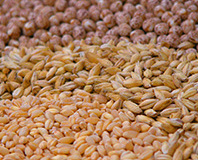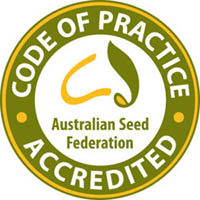Read the latest information on
Foot-and-mouth disease

Consider the risks of introducing new pests and diseases onto your property when sourcing grain for sowing
While it might be tempting to trade seed ‘over the fence’ for sowing, the biosecurity risks associated with using uncertified seed should be considered carefully.
Dr Sharyn Taylor, coordinator of the Grains Farm Biosecurity Program run by Plant Health Australia, says sowing uncertified seed poses an unknown level of risk to production.
“In addition to uncertainty around varietal purity, germination or traits, uncertified seed also poses a biosecurity risk, through possible introduction of new weeds and diseases,” she says.
“Uncertified seed can contain an unknown concentration of weed seeds and while weed management is a normal part of crop production, the introduction of new species of weeds onto properties can be a real headache and threat to efficient production.”
The second risk is spreading a plant disease through contaminated seed.
Dr Taylor says there are several pests and diseases present in parts of Australia that can be introduced to a property in seed. Examples include Fusarium, which can cause crown rot or Fusarium head blight in wheat and durum; bacterial blight, which is an important seed-borne disease of field peas; the fungal pathogen Ascochyta blight; many viruses of pulses; bunts and smuts (although these can usually be controlled with seed treatments); and lupin anthracnose, a severe foliar disease that poses a significant threat for growers in NSW and Victoria.
 Some seed-borne pathogens are carried on the seed coat, while others can be harboured deep inside the seed. Fungi and bacteria are mostly located on the outside of the seed coat, while viruses are only found in the seed embryo or in tissues of the seed coat. All can remain viable for years.
Some seed-borne pathogens are carried on the seed coat, while others can be harboured deep inside the seed. Fungi and bacteria are mostly located on the outside of the seed coat, while viruses are only found in the seed embryo or in tissues of the seed coat. All can remain viable for years.
Growing conditions will affect the rate of transmission of fungal and bacterial disease from seed to crop. However, viruses are less affected by seasonal conditions and usually have higher transmission rates than those diseases caused by fungi or bacteria.In general, seed-borne diseases strike early in the growth of a plant, causing poor crop establishment and reduced plant vigour, which results in lower yields.
“Ideally, purchase seed from a reputable seed supplier and obtain a statement of seed analysis, often referred to as a purity and germination (or P&G) statement,” Dr Taylor says.
“Members of the Australian Seed Federation abide by a code of practice for labelling and marketing and will provide a seed analysis certificate on request. You can find a list of members at the Australian Seed Federation website.”
She says it is also good practice to make sure that the seed lot, or seed line number, quoted on the statement matches the one on the bag or label.
If you choose to sow retained seed, Dr Taylor recommends only selecting seed from crops that showed no sign of disease, had good weed control and, where possible, no weather damage.
Stored seed should have low moisture and be kept cool, preferably with aeration, and monitored monthly for the presence of live insects.
Prior to sowing, you can have seed samples tested. The Australian Seed Federation lists certified laboratories that can provide testing.
Retaining seed, Grains Research and Development Corporation
Seed health testing in pulse crops, Agriculture Victoria
Acknowledgement: reproduced from an article from GRDC’s Ground Cover magazine